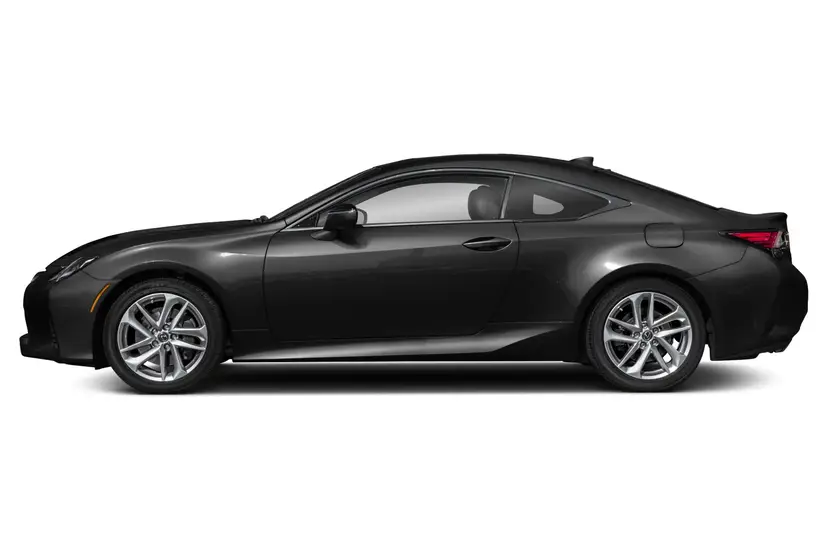
Editor’s note: This review of the 2016 Lexus RX 350 was written in October 2015, but little has changed for 2017 aside from many safety features now being made standard, plus the addition of a front-wheel-drive F-Sport model. To see everything that’s changed for 2017, click here, or to see a side-by-side comparison of model years, click here.
Since its introduction in 1998, the Lexus RX midsize luxury SUV has been a hit. It’s one of the few luxury vehicles of any type that regularly sells more than 100,000 units a year in the U.S. It’s been a boon for the Lexus brand. But Lexus has always played it safe with the RX, with styling that was warm but never hot and driving dynamics that were pleasing but never entertaining.
The new 2016 RX 350 and RX 450h hybrid are the latest attempts to inject some youthful exuberance into the Lexus lexicon, but with many changes that don’t go much more than skin-deep, has Lexus gone far enough to attract new buyers?
Exterior & Styling
To paraphrase style maven Tim Gunn, the 2016 Lexus RX has a whole lot of look. From the pointed, gaping, spindle-shaped grille up front to the hash work of character lines down the side and a floating roof element that is dangerously close to becoming the latest styling element that every automaker incorporates, the new RX is highly distinctive. And yet, it works.
This may be the first instance of Lexus’ dramatic new styling coming together cohesively in an appealing manner. The new RX looks modern and distinctive, and the proportions are well-suited to the look. It’s a little bit longer and marginally wider, mostly to give backseat passengers more legroom, but the RX looks good from any angle.
LED headlights and taillights can be had, and even an upgraded premium tri-lens package light can be optioned, which features LED cornering lights and rear turn signals. Eighteen-inch wheels are standard, but 20-inch wheels are optional, an inch larger than the 2015 unit offered. They fill out the wheel wells nicely and add to the RX’s high-tech look.
How It Drives
The RX comes in four flavors: the base RX 350, the RX 350 F Sport, the RX 450h hybrid and new for 2016, an RX 450h F Sport. The base model’s 3.5-liter V-6 is basically unchanged from 2015 aside from a modest 25-horsepower bump. The eight-speed automatic that was only available on the 2015 RX 350 F Sport is now standard on the RX 350 too. The result is an acceptably quick SUV that delivers thrust in a smooth flow, with shifts that are unobtrusive and practically seamless.
The transmission does hunt a bit during spirited driving, but with eight speeds to play with, that’s to be expected. The result of that hunting is a vehicle that’s always ready with power when you need it; the powertrain, in fact, is the best part of the RX experience.
If you’d rather pay a little more money for better fuel economy, the RX 450h hybrid isn’t a bad way to do it, with just as much power on tap when you need it, but the added benefit of limited EV operation when you don’t. It makes a total of 308 system hp from a combination of the V-6 and electric motors. The hybrid still uses a heavy nickel-metal-hydride battery instead of a lighter, more power-dense lithium-ion one, but it’s been repackaged so it no longer intrudes into the cargo or rear passenger space.
From a powertrain standpoint, there isn’t much of a downside to opting for the hybrid. Throttle response is delayed a bit as it passes through an initial EV mode before employing the gasoline engine, but the hybrid performs remarkably similarly to the gas-only model. It’s worlds better than the outgoing RX hybrid.
The rest of the RX 350 is less entertaining.
Its steering is nicely balanced, but it feels slow to react. In normal driving through parking lots and interstate roads, it won’t be an issue, but when trying to negotiate switchbacks or mountain twisties, it becomes more apparent. The RX 350 is prone to understeer in both front- and all-wheel-drive versions, with pronounced body roll that makes the heavy SUV push through corners instead of slice neatly through them.
It is not nearly as athletic as a BMW X5 or Audi Q5, but its heft and damping give it a solidity and stability that is lacking from vehicles like the Cadillac SRX. The brakes are unimpressive, providing little feedback. Using them almost feels like you’ve pushed a “brakes button” instead of a pedal — they’re working, but it doesn’t feel like there’s much mechanical action happening underfoot; the RX’s mass once again is acutely felt.
Both the RX 350 and RX 450h can be had with an F Sport trim aimed at changing the driving experience to something more appealing to German-luxury buyers. The F Sport trim doesn’t get any more power; its mechanical changes are limited to firmer suspension tuning, a special transmission shift program and less power-steering assist, for better feedback. There are also some added appearance items inside and out.
Required steering effort goes up noticeably in F Sport versions. If you use the multimode selector dial to switch into Sport S or Sport S+ modes, it goes up even more dramatically. Transmission and accelerator responsiveness also get much more aggressive, and the adaptive suspension that’s unique to the F Sport stiffens the ride considerably. Unfortunately, none of this translates into a more capable vehicle. It’s still just as heavy as the base model and features significant understeer and body roll.
It may feel sportier, but the F Sport’s changes don’t improve the RX’s abilities. I would opt for a base RX 350 over the F Sport and its more heavily bolstered sport seats (which are too small, too firm and too rigidly bolstered) and less informative gauge package. The more affordable version is much more pleasant to drive, more comfortable and quieter to boot.
Fuel economy is above average for both RX models. The RX 350 is estimated to achieve 20/28/23 mpg city/highway/combined with front-wheel drive and 19/26/22 mpg with all-wheel drive. The 450h is a bit better, with an estimated 31/30/30 mpg in front-drive models and 30/28/30 mpg with all-wheel drive. Most of the benefit comes in city driving thanks to the hybrid’s gas-saving low-speed EV mode.
In comparison, the Acura MDX gets nearly identical numbers, with 20/27/23 mpg and 19/26/22 mpg with front- and all-wheel drive, respectively. Cadillac’s SRX gets a much worse 17/24/19 mpg and 16/23/18 mpg. The larger Infiniti QX60 isn’t quite as powerful but manages 21/27/23 mpg with front-wheel and 19/26/22 mpg with all-wheel drive, thanks to its continuously variable automatic transmission. The hybrid QX60 has been discontinued for 2016.
Interior
Inside, the RX gets a makeover with more luxurious materials and better trim and color options. Four colors of leather are available (including dark red, exclusive to the F Sport), as are five trim materials, four of which are real wood veneer in some lovely patterns. The standard 10-way power-adjustable front seats can be upgraded with the optional Luxury Package. With it, they come wrapped in semi-aniline leather and have power lower cushion lengtheners, making these the most comfortable seats in the whole lineup.
It’s comparable to the quality of an Acura MDX inside, and nicer than a Cadillac SRX or Infiniti QX60. The RX does, however, still trail the German luxury cars in terms of sophistication and feel.
Backseat room is decent, with more legroom than before thanks to a longer wheelbase. Headroom is plentiful, front and rear. All the surfaces you’re likely to touch with either hands or elbows have a premium look and feel, aside from the buttons and switches, which look like they could easily have come from a high-end Toyota-brand model. On the upside, the buttons are mechanical rather than touch-sensitive panels.
Outward visibility is pretty good, with the exception of the rear three-quarters view. Those funky pillars in the cargo area inhibit the view out back, but every other direction offers plenty of open views.
Ergonomics & Electronics
The gauges in base models are clear and easy to read, but the F Sport’s Lexus LFA-inspired gauges are less useful at a glance. The optional premium Mark Levinson audio system is fantastic, but even the mid-grade 12-speaker non-branded system is impressive.
Much less impressive is the RX’s multimedia system that produces the music as well as navigation and other tech. It doesn’t feature the maddening trackpad like the smaller NX, but it still has a joystick and selector buttons on the console by your hand. Imagine driving down the road while using a laptop computer, with the display screen sitting on the dash and your wireless mouse in your lap, as you try to identify icons on the screen and navigate the cursor to them to select them. This is essentially what Lexus is having drivers do with the RX’s Remote Touch Interface system, and it’s horrible.
The company is long overdue for rethinking how it approaches its multimedia system, and given that neither Apple CarPlay nor Android Auto are even planned for the RX, it seems the whole multimedia strategy needs a redo if the brand wants to attract younger buyers.
Cargo & Storage
The RX 350 features 18.4 cubic feet of cargo space behind its backseat, expandable to 56.3 cubic feet when the rear seats are folded. The seats do not fold perfectly flat, but it’s close enough as to not matter.
These numbers, however, are a bit misleading, as they differ considerably from the 2015 model. The 2015 RX 350 had a stated 40.0 cubic feet of cargo space behind the rear seats, expandable to 80.3 cubic feet, and the space this year is about the same. We chalk up this model’s smaller numbers to a difference in how Lexus is now measuring cargo space (see an explanation of the problems with measuring cargo space here). The Cadillac SRX has 29.8 cubic feet of cargo room, expandable to 61.1 cubic feet. Both the MDX and QX60 have third-row seating, expanding their usable passenger area. The MDX features 15.0 cubic feet behind the third row, opening to 38.4 cubic feet behind the second row and 68.4 cubic feet with all rows stowed. The QX60 is similarly sized, with 15.8 cubic feet behind its third row, 40.8 behind the second and a total cargo volume of 76.5 cubic feet.
Safety
The 2016 RX 350 and 450h have not yet been crash-tested.
Lexus has bundled many of the RX’s safety features into a new package, called Lexus Safety System Plus. It combines radar-based cruise control, lane keep assist, automatic high-beam headlights, pre-crash preparation with pedestrian detection, autonomous braking and a few other features into a single high-value package.
While the distance-keeping cruise control with automatic stop-and-go worked well, the lane keep assist feature is overly sensitive, vibrating the steering wheel and nudging you back into your lane if you even approach the center line, much less actually cross it. After a couple miles of being forced to meticulously maintain the center of my lane lest my steering wheel continue to vibrate, I switched the feature off. See all the RX 350’s standard safety equipment here.
Value in Its Class
Overall, legions of happy buyers of the previous three generations of RX SUVs will be perfectly pleased with the new fourth-generation model. If you don’t ask too much of it in terms of spirited driving, it will deliver a quiet, comfortable commute.
Pricing for the new RX was not yet available at publication time, but is not expected to change much from previous years.
Competitors are numerous and varied in their styles, with the big choice seemingly coming in configuration (front- or rear-wheel drive) and interior capacity (two rows or three). The Acura MDX is the competitor most often considered: it’s priced nearly identically, based off a car platform, and has a V-6 and front-wheel drive. It’s a bit bigger than the RX, though, offering three-row seating.
The same can be said for the Infiniti QX60, which is based on the Nissan Pathfinder and has specs nearly identical to those of the MDX. The Cadillac SRX is a bit smaller than the RX 350 and decidedly older, but it’s also a five-seat model and features V-6 power and front-wheel drive. It is, however, due to be replaced in 2016 by the heavily revised and larger Cadillac XT5.





































